Standard E-1 ("Old Reliable")

The Standard E-1, nicknamed "Old Reliable," was a WWI-era biplane trainer used by the U.S. Army Air Service. Introduced in 1917, it was primarily utilized for pilot training rather than combat. The E-1 was known for its stability and forgiving flight characteristics, making it ideal for novice pilots.
Powered by a Hall-Scott A-7a engine producing 100 horsepower, it had a top speed of around 100 mph. The E-1's robust construction and reliability earned it its nickname. While not a combat aircraft, it played a crucial role in preparing American pilots for the challenges of aerial warfare during WWI.
LUSAC-11/21

The LUSAC-11/21 was a lesser-known American fighter aircraft developed near the end of WWI. Designed by the Loughead Aircraft Manufacturing Company (later Lockheed), it was intended for high-altitude interception. The LUSAC-11 first flew in 1918, powered by a Liberty engine.
It had a top speed of about 133 mph and could reach altitudes over 20,000 feet. The improved LUSAC-21 variant featured a turbosupercharged engine for better high-altitude performance. Although promising, the aircraft arrived too late to see combat in WWI. Only a small number were built, primarily serving as technology demonstrators for future high-altitude fighter designs.
VE-7 "Bluebird"
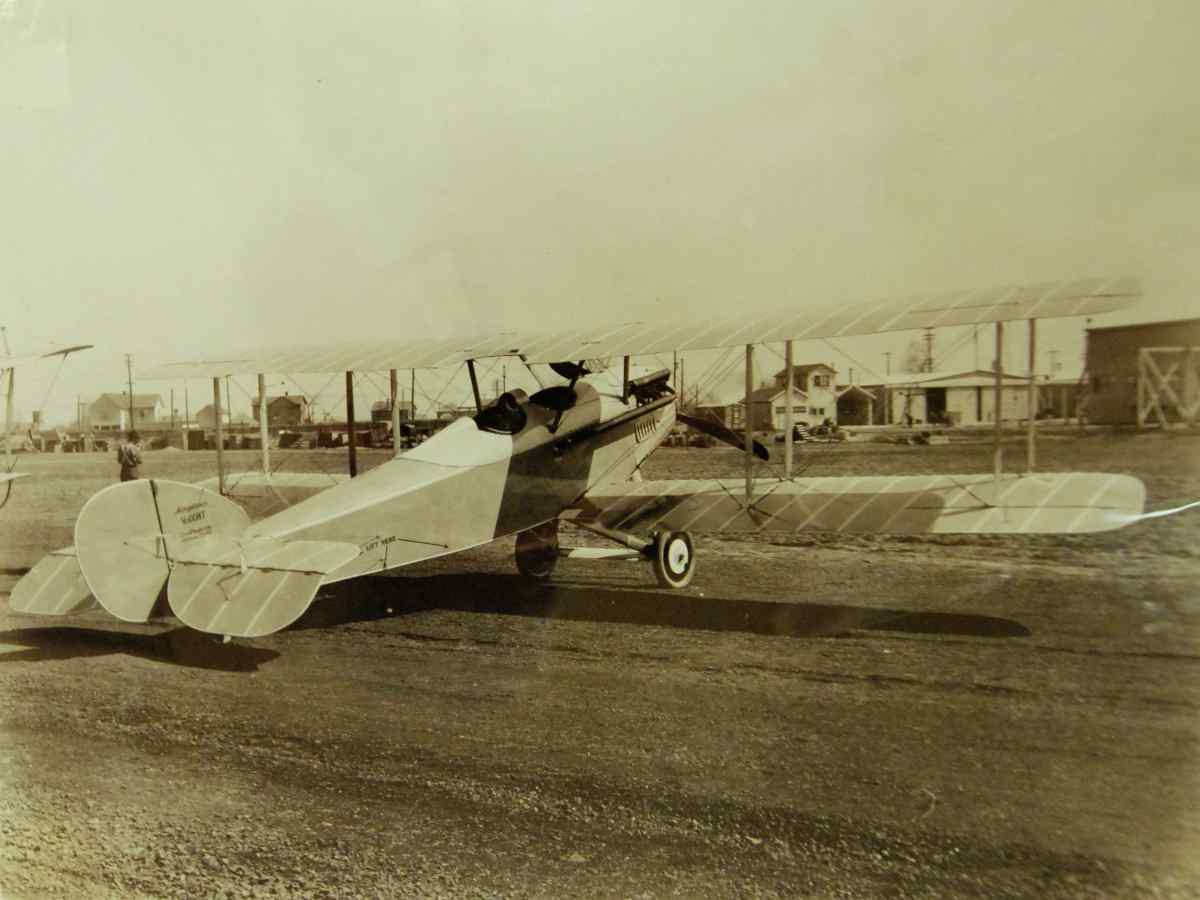
The Vought VE-7 "Bluebird" was one of the first fighter aircraft designed for the U.S. Navy in the early 1920s. It was a single-seat biplane powered by a Wright-Hispano engine with a top speed of about 110 mph. The VE-7 was notable for being one of the first aircraft to operate from the Navy's early aircraft carriers. It played a crucial role in developing carrier aviation techniques and tactics.
The "Bluebird" nickname came from its distinctive blue paint scheme. While primarily used as a trainer and scout, it was also capable of carrying small bombs for light attack missions. The VE-7 helped establish Vought as a major naval aircraft manufacturer.
Thomas-Morse MB-3
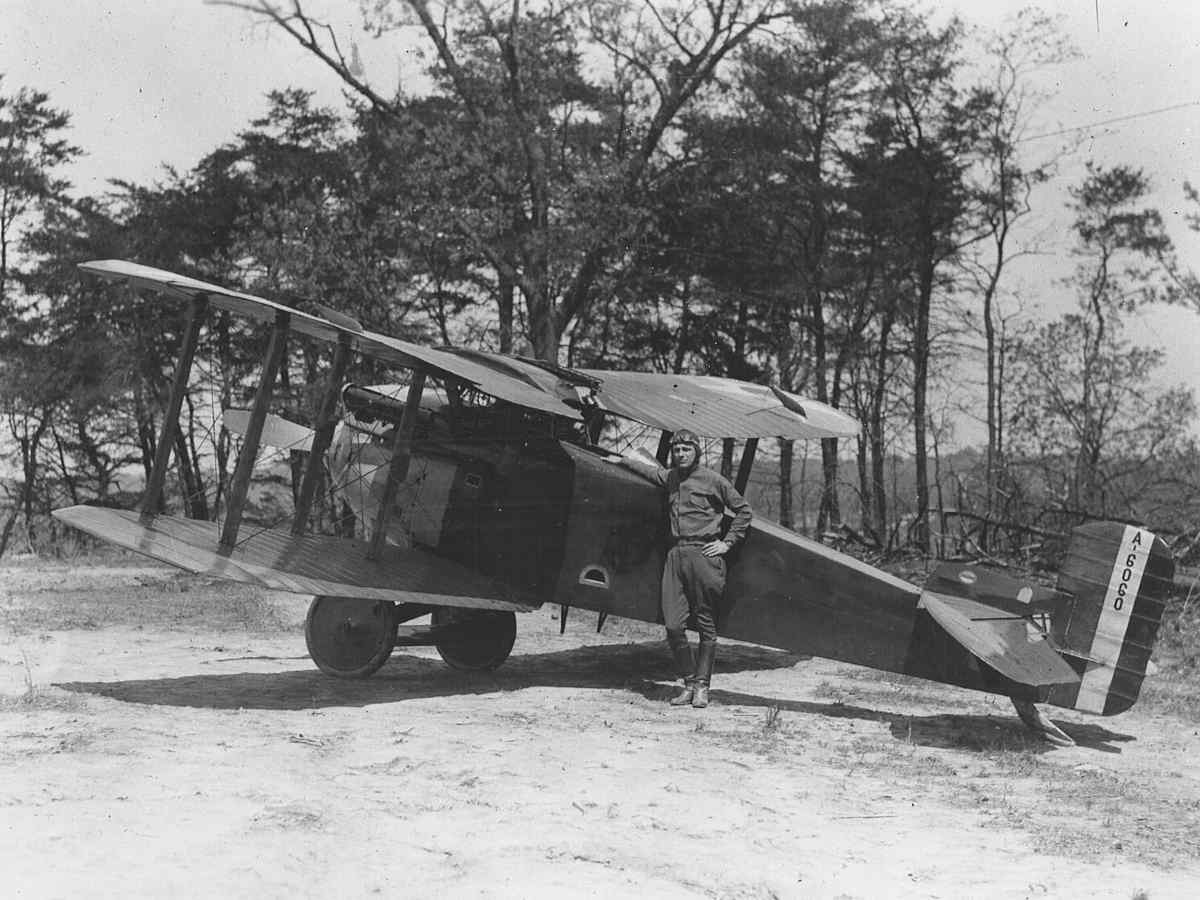
The Thomas-Morse MB-3 was an American-designed fighter aircraft that entered service with the United States Army Air Service in 1922. It was developed to replace the French-built SPAD fighters used by the U.S. during WWI. The MB-3 was powered by a Wright H V8 engine, producing around 300 horsepower, which gave it a top speed of approximately 141 mph (228 km/h).
Despite being an improvement over its predecessors, the MB-3 suffered from structural weakness and engine cooling issues. Only 50 were built before production shifted to an improved version, the Boeing MB-3A. The Thomas-Morse MB-3 played a role in advancing American fighter design, but its service life was relatively short due to rapid advancements in aircraft technology during the 1920s.
Martin MB-2

The Martin NBS-1 (Night Bombardment, Short distance), also known as the Martin MB-2, was one of the first American-designed bombers, developed in the early 1920s. It was a large biplane bomber with a crew of four, powered by two Liberty L-12A engines producing 400 hp each. The MB-2 had a top speed of about 99 mph (160 km/h) and could carry a bomb load of up to 3,000 pounds (1,360 kg).
Despite its relatively slow speed, it was considered advanced for its time, featuring an all-metal fuselage. The MB-2 was primarily used for coastal defense and played a significant role in the development of American strategic bombing doctrine. It gained fame for its use in Billy Mitchell's ship-bombing demonstrations in 1921, which helped prove the effectiveness of air power against naval targets. These tests, where MB-2s sank the captured German battleship Ostfriesland, were pivotal in shaping future military aviation strategies.f
Curtiss P-6 Hawk
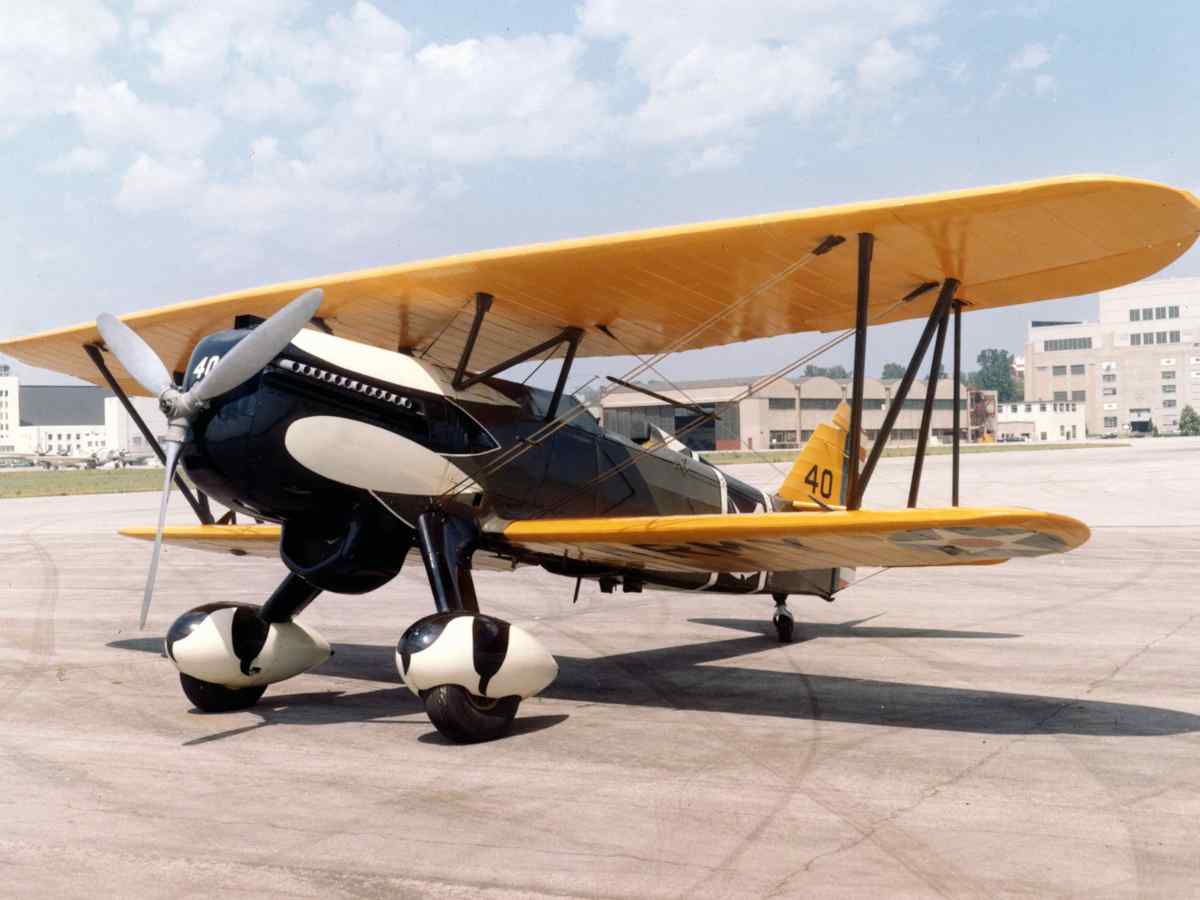
The Curtiss P-6 Hawk was a biplane fighter aircraft that served with the U.S. Army Air Corps in the late 1920s and early 1930s. Known for its sleek lines and bright paint schemes, it was one of the last biplane fighters in U.S. service. The P-6E variant, powered by a Curtiss V-1750 Conqueror engine, could reach speeds of around 193 mph.
It was highly maneuverable and popular with pilots. The Hawk featured innovations like a streamlined NACA cowling and low-drag wire bracing. While obsolete by WWII, the P-6 Hawk played a crucial role in developing American fighter tactics and pilot training during the interwar period.
North American P-51D Mustang
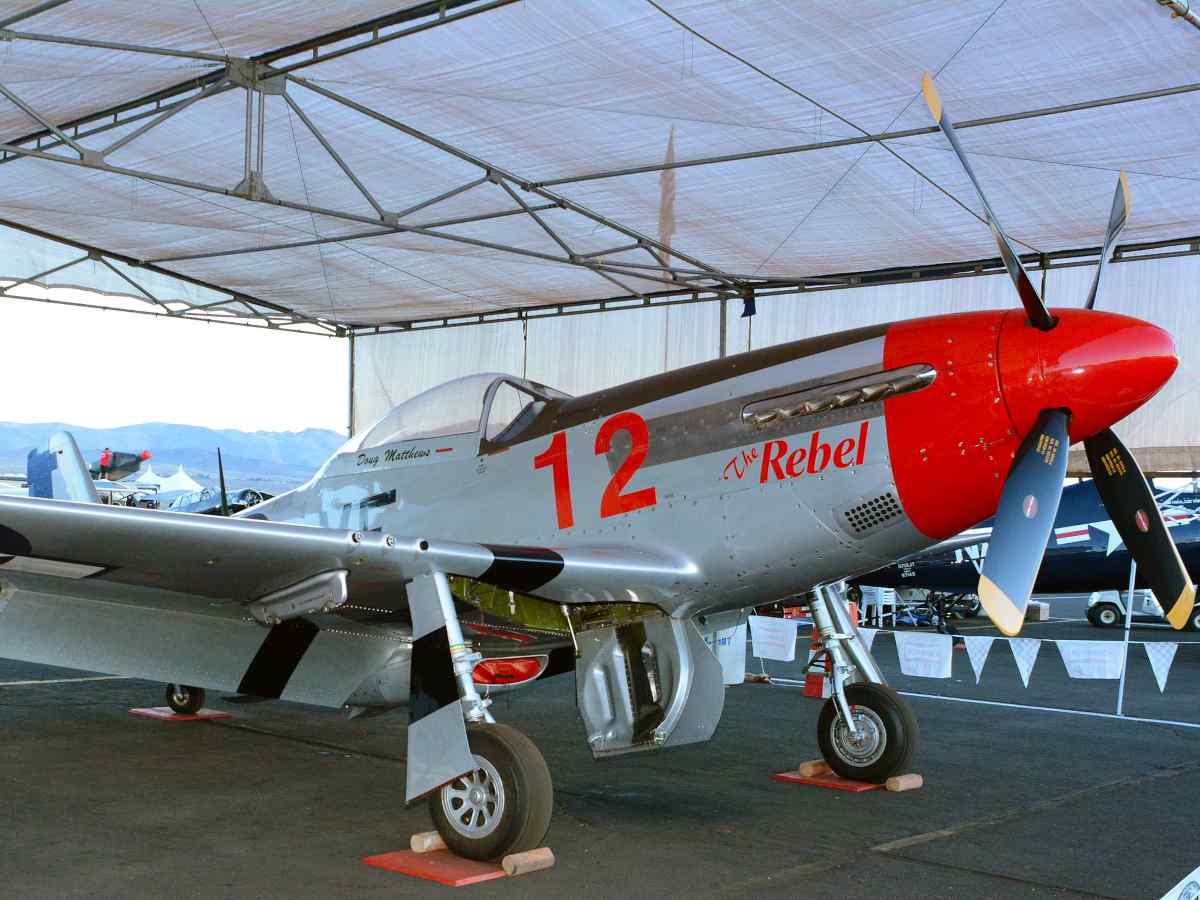
The North American P-51D Mustang is one of the most famous fighter aircraft of WWII. Introduced in 1944, it was powered by the Rolls-Royce Merlin engine, giving it exceptional range and performance. With a top speed of over 440 mph, it could outperform most Axis fighters.
The P-51D variant featured a bubble canopy for improved visibility and six .50 caliber machine guns. Its long range allowed it to escort bombers deep into enemy territory, turning the tide of the air war over Europe. The Mustang continued to serve in the Korean War and with many air forces worldwide. Its combination of speed, range, and firepower made it one of the most successful and versatile fighters of its era.
North American F-86 Sabre
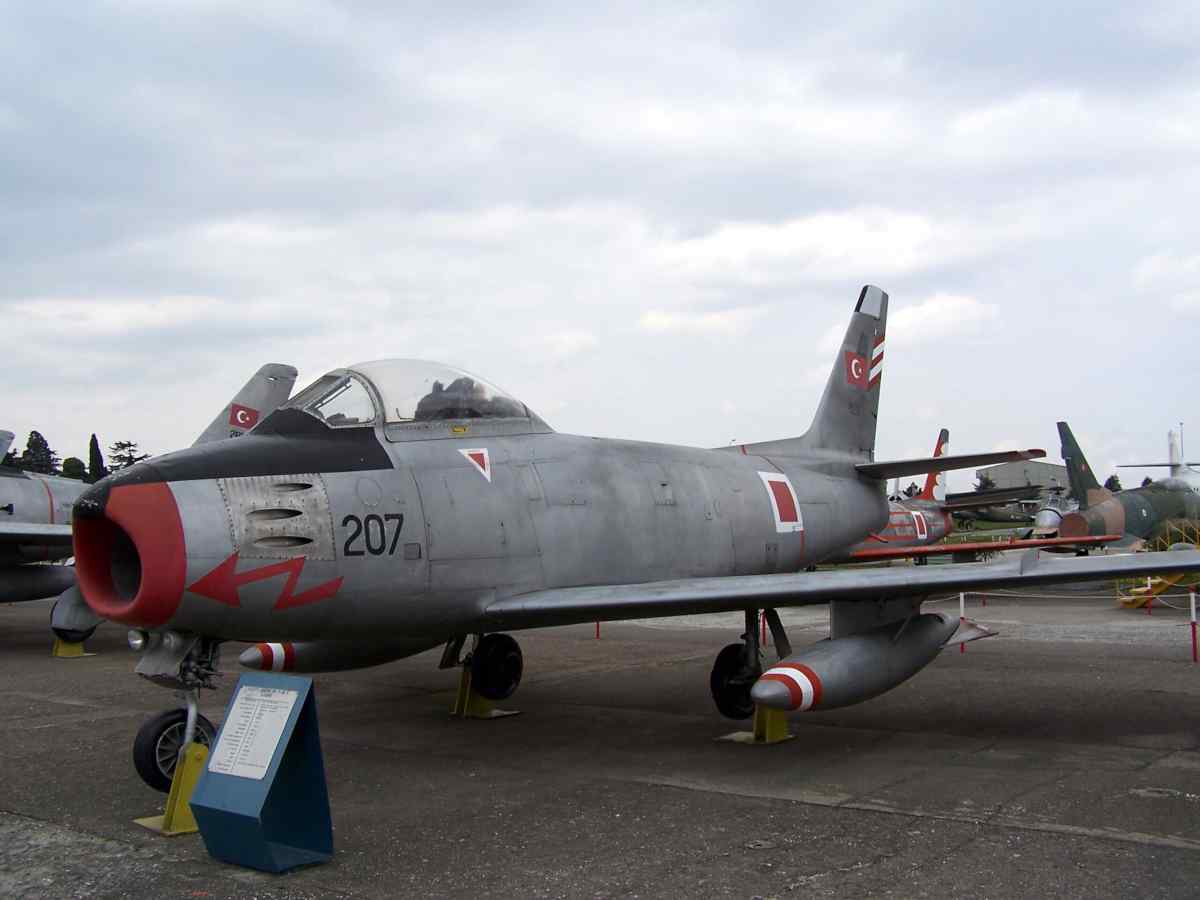
The North American F-86 Sabre was a transonic jet fighter aircraft first introduced in 1949. It played a crucial role in the Korean War, achieving air superiority against Soviet-built MiG-15s. The F-86 was capable of speeds approaching Mach 1 and was known for its excellent maneuverability. It featured a swept-wing design, which improved its high-speed performance.
The Sabre was armed with six .50 caliber assault weapons and could carry rockets and bombs for ground attack missions. Its success in Korea established the United States as a leader in jet fighter technology. The F-86 served with numerous air forces worldwide and influenced fighter design for years to come.
North American F-107

The North American F-107 was an experimental fighter-bomber developed in the 1950s. It was an offshoot of the F-100 Super Sabre design, featuring a unique over-fuselage air intake. The F-107 was capable of speeds over Mach 2 and was designed to carry nuclear weapons.
Only three prototypes were built, as the aircraft lost out to the Republic F-105 Thunderchief for production. Despite its cancellation, the F-107 demonstrated several advanced features, including an early fly-by-wire control system and an all-moving vertical stabilizer. Its development contributed to advancements in supersonic aircraft design and systems integration. The surviving F-107 prototypes were used for NASA research before being retired to museums.
Lockheed F-104 Starfighter
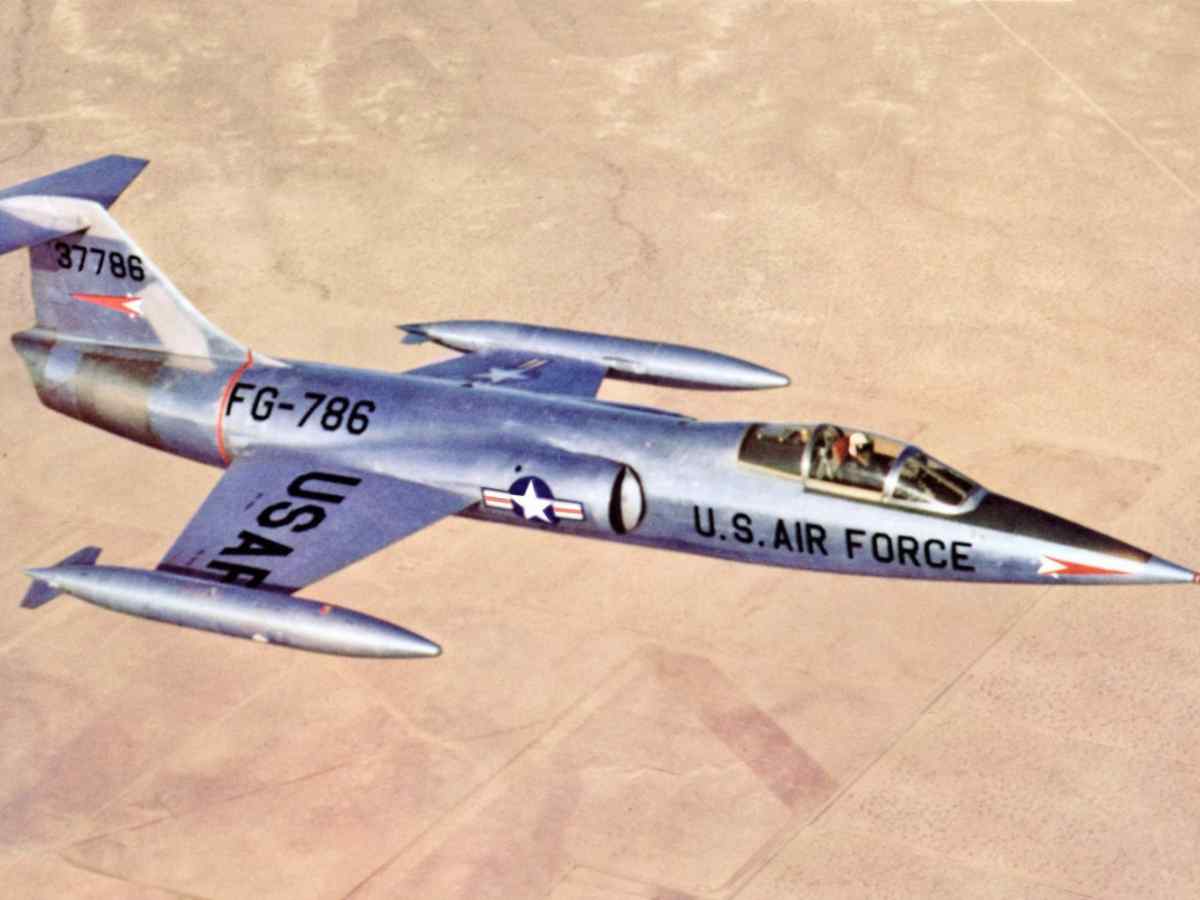
The Lockheed F-104 Starfighter, nicknamed "The Missile with a Man in It," was a supersonic interceptor aircraft that first flew in 1954. Known for its sleek, aerodynamic design with stubby wings, it was capable of speeds over Mach 2, setting numerous world records for speed and altitude.
Despite its impressive performance, it gained a reputation for being difficult to fly and had a high accident rate. The Starfighter served with the USAF until 1969 but continued in use with other NATO countries into the 2000s. It was primarily used for interceptor and ground-attack roles. The F-104's advanced technology and high-speed capabilities influenced fighter design for years to come.
McDonnell F2H Banshee
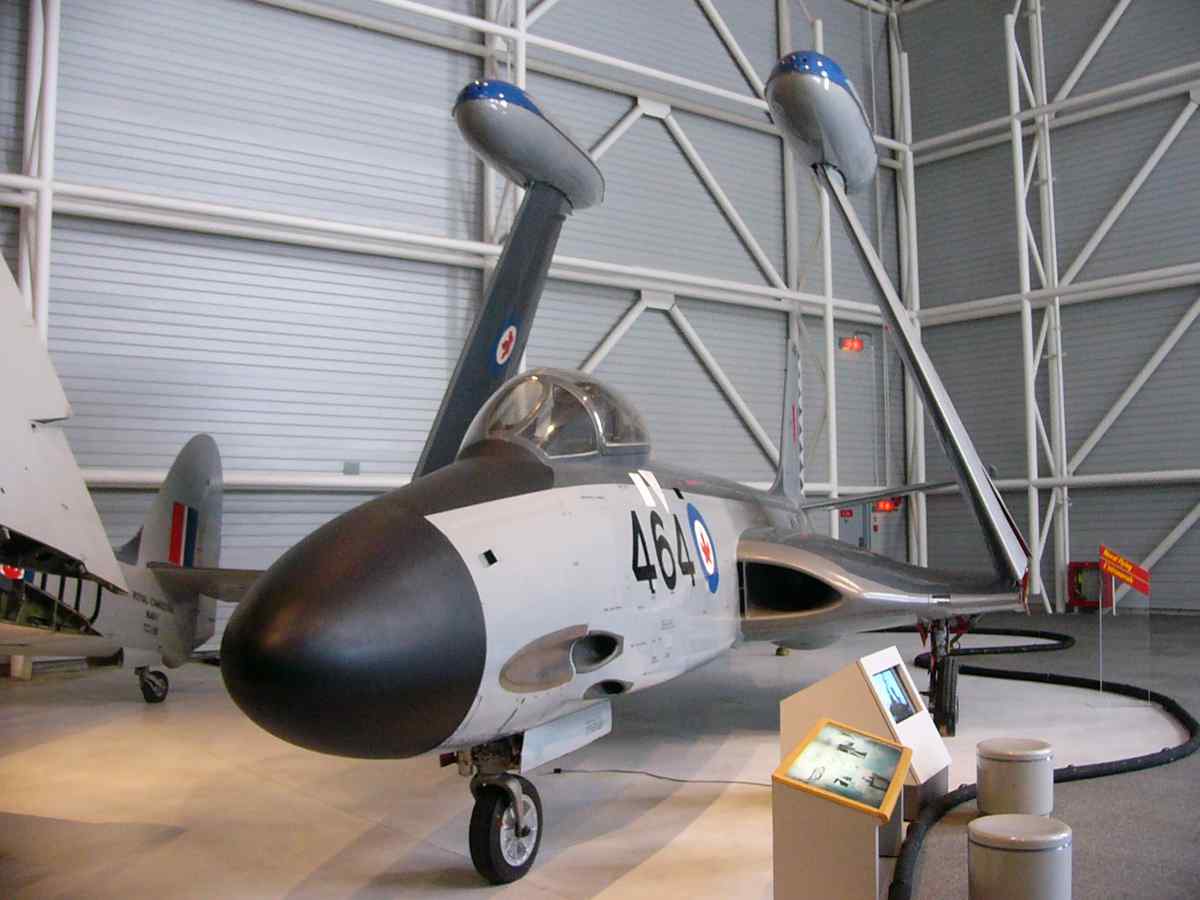
The McDonnell F2H Banshee was a carrier-based jet fighter that served with the U.S. Navy and Marine Corps from 1948 to 1961. It was one of the primary American fighters during the Korean War. The Banshee was known for its reliability and good handling characteristics, with a top speed of about 580 mph.
The Banshee featured four 20mm cannons and could carry a variety of bombs and rockets. The F2H was particularly effective in the night fighter and photo-reconnaissance roles. Its long range made it valuable for fleet defense and escort missions. The Banshee played a crucial role in the transition from propeller-driven to jet-powered naval aviation.
Republic F-84F Thunderstreak

The Republic F-84F Thunderstreak was a swept-wing development of the straight-winged F-84 Thunderjet. Introduced in 1954, it served with the USAF until 1971. The F-84F was capable of speeds up to 695 mph and was primarily used as a fighter-bomber. It played a significant role in the Cold War, being deployed with NATO forces in Europe and capable of carrying nuclear weapons.
The Thunderstreak was known for its stability at high speeds and its ability to carry a substantial payload. However, it suffered from maintenance issues and was gradually replaced by more advanced aircraft. Despite its challenges, the F-84F was widely exported and served with several allied air forces.
Northrop F-89 Scorpion

The Northrop F-89 Scorpion was an all-weather interceptor aircraft used by the United States Air Force from 1950 to 1969. Designed to counter the threat of Soviet bombers during the Cold War, it was one of the first aircraft armed with air-to-air nuclear weapons. The F-89 had a distinctive design with a large radar nose and wingtip fuel tanks. Later variants were equipped with the innovative Genie unguided nuclear rocket.
With a top speed of about 645 mph, it wasn't supersonic but was effective in its interceptor role. The Scorpion played a crucial part in North American air defense during the 1950s and early 1960s, serving as a deterrent against potential Soviet incursions.f
Bell P-39 Airacobra
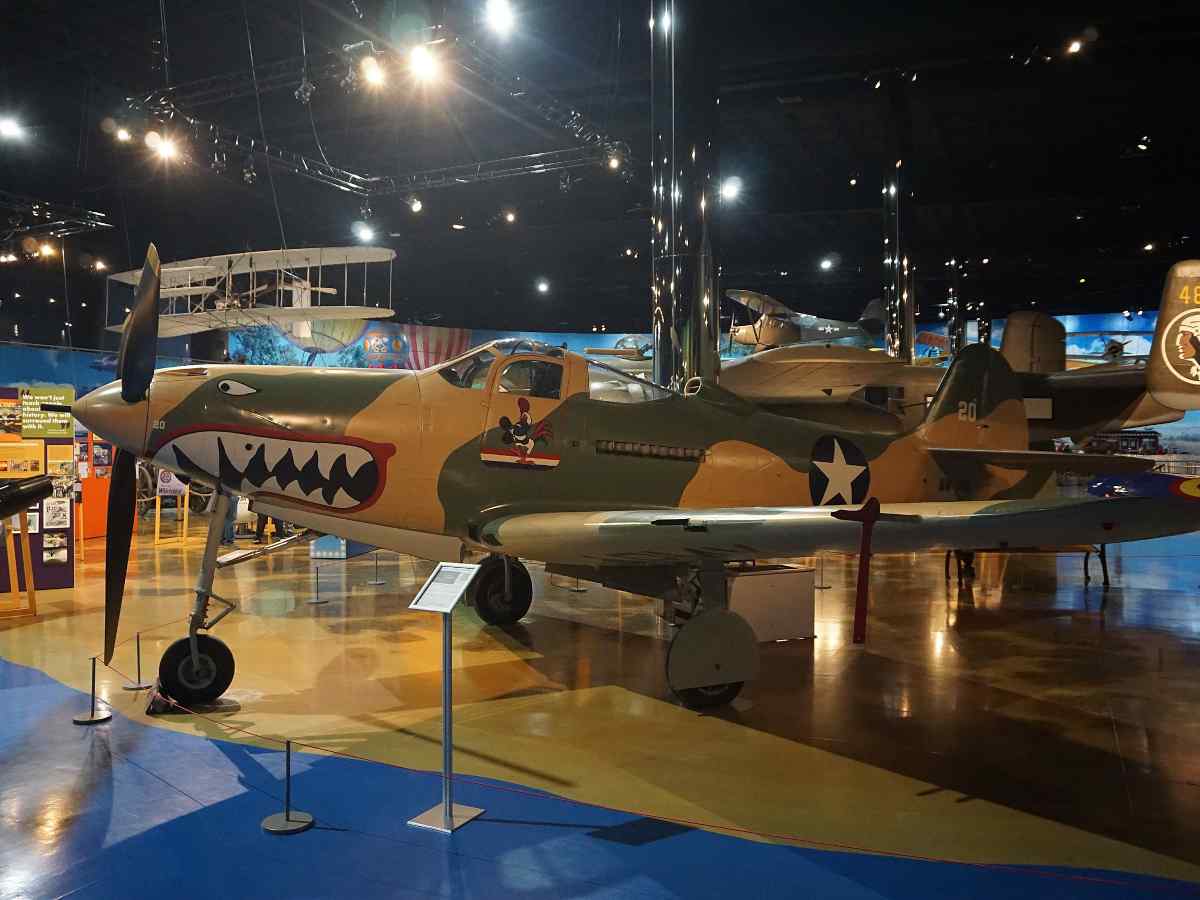
The Bell P-39 Airacobra was a unique WWII-era fighter aircraft, notable for its unorthodox design with the engine located behind the cockpit. This configuration allowed for a 37mm cannon firing through the propeller hub. Introduced in 1941, the P-39 had a top speed of about 390 mph.
While not favored by U.S. pilots due to poor high-altitude performance, it excelled in low-altitude combat. The Airacobra found its niche with the Soviet Air Force, where it was used effectively as a ground-attack aircraft on the Eastern Front. Over 9,500 P-39s were built, contributing significantly to Allied air power during the war.
Curtiss P-40 Warhawk
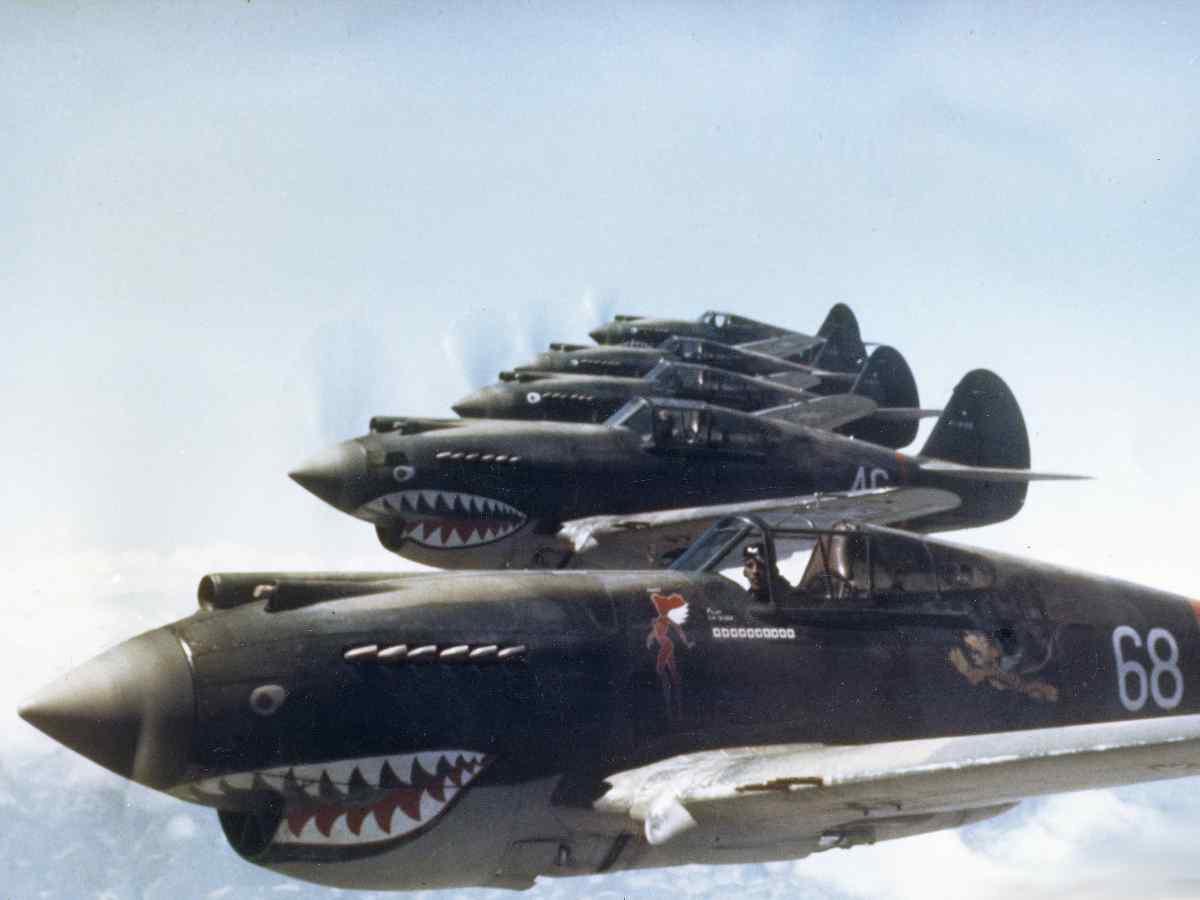
The Curtiss P-40 Warhawk was a workhorse fighter of WWII, serving in nearly every theater of the war. Introduced in 1938, it was an evolution of the Curtiss P-36 Hawk. The P-40 was known for its ruggedness and good low-altitude performance, with a top speed of about 380 mph. While outclassed by newer fighters in some roles, it remained effective throughout the war, particularly in ground attack missions.
The P-40 gained fame with the American Volunteer Group (Flying Tigers) in China, where its distinctive shark-mouth paint scheme became iconic. Over 14,000 P-40s were built, serving with many Allied air forces and playing a crucial role in the early years of the war.
Lockheed P-38 Lightning
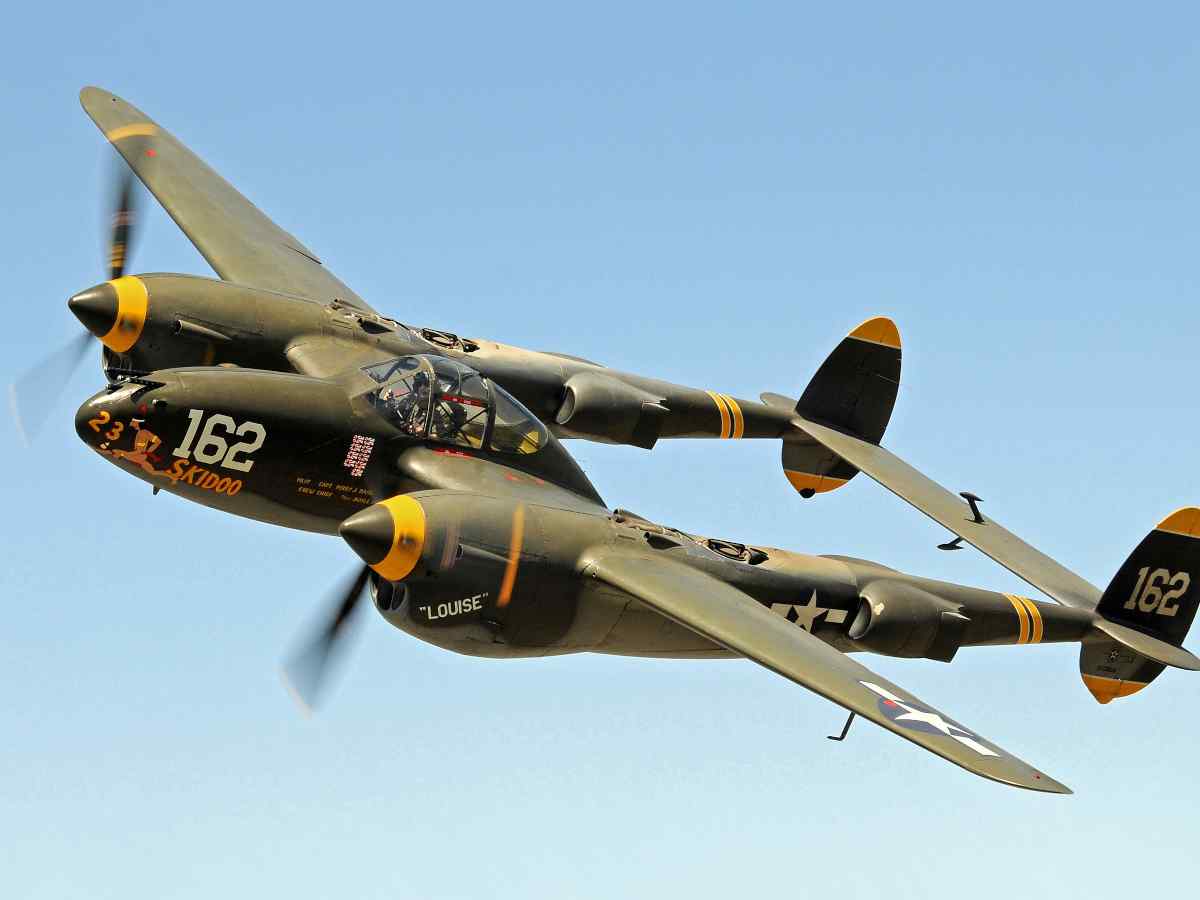
The Lockheed P-38 Lightning was a distinctive twin-boom, twin-engine fighter used extensively in WWII. Introduced in 1941, it was one of the fastest and most versatile fighters of its time, capable of speeds over 400 mph. The P-38's unique design provided excellent visibility and stability, making it effective in various roles, including interception, long-range escort, and reconnaissance.
It was particularly successful in the Pacific theater, where its long range was invaluable. The Lightning was the only American fighter produced throughout the entire American involvement in WWII. Notable for its concentrated firepower and the ability to carry a heavy payload, the P-38 was also the aircraft in which America's top-scoring ace, Richard Bong, achieved his victories.
Vought F4U Corsair
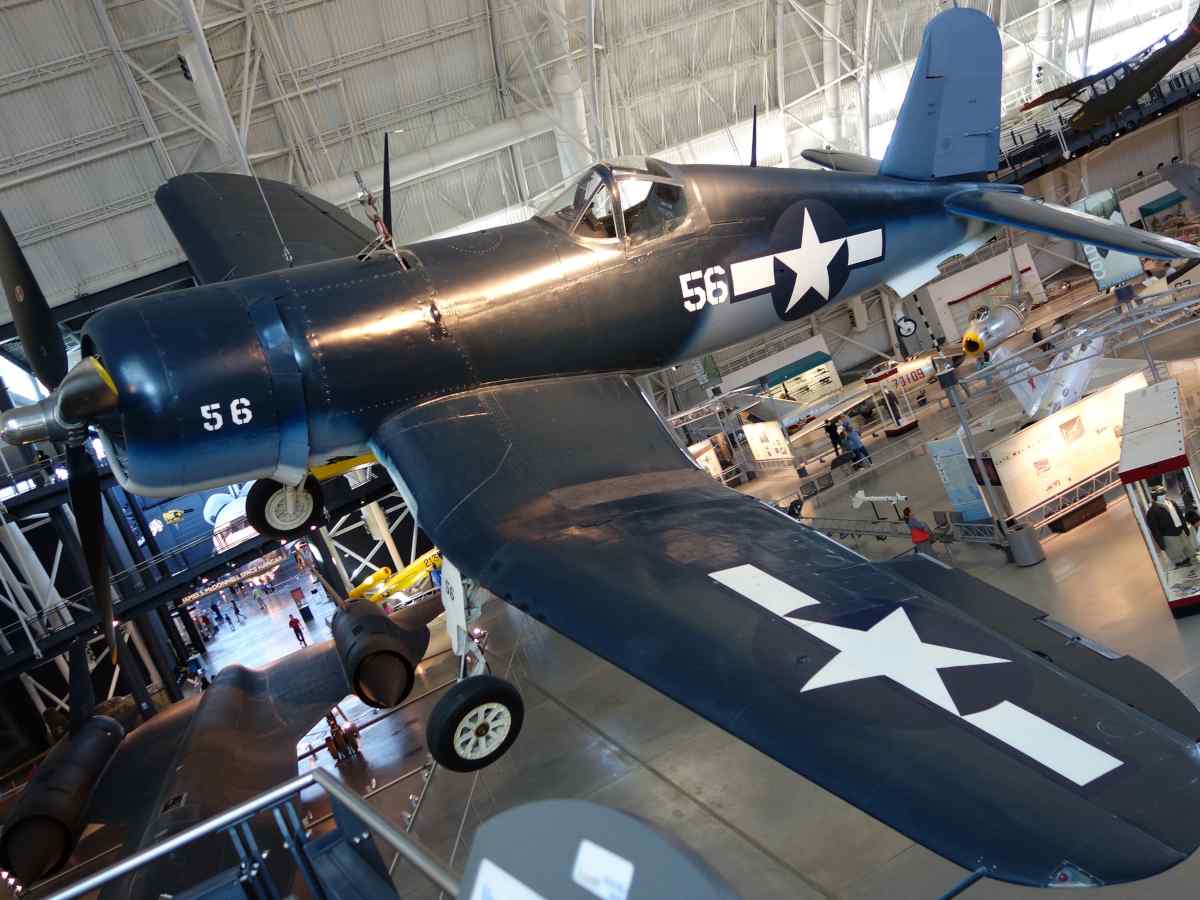
The Vought F4U Corsair was a formidable WWII fighter primarily used by the U.S. Navy and Marine Corps. Introduced in 1942, it was known for its distinctive inverted gull wings and powerful Pratt & Whitney R-2800 engine. The Corsair could reach speeds over 400 mph, making it one of the fastest piston-engined fighters of its time.
Initially challenged by carrier operations, it excelled in land-based roles. The Corsair was highly effective in the Pacific theater, achieving an impressive K/D ratio against Japanese aircraft. Its robust construction and heavy armament made it effective in both air-to-air and ground attack roles. The Corsair continued serving in various conflicts into the 1960s.
Republic P-47 Thunderbolt

The Republic P-47 Thunderbolt, nicknamed "The Jug," was one of the largest and heaviest fighter aircraft of WWII. Introduced in 1942, it was powered by a massive Pratt & Whitney R-2800 engine, giving it a top speed of about 430 mph. The P-47 was known for its durability and firepower.
Initially used as a high-altitude escort fighter, it later excelled in the ground attack role. The Thunderbolt's air-cooled engine and rugged construction allowed it to withstand significant battle damage. Over 15,600 were built, serving in all theaters of the war and continuing in use with several air forces into the 1960s.
YFM-1 Airacuda
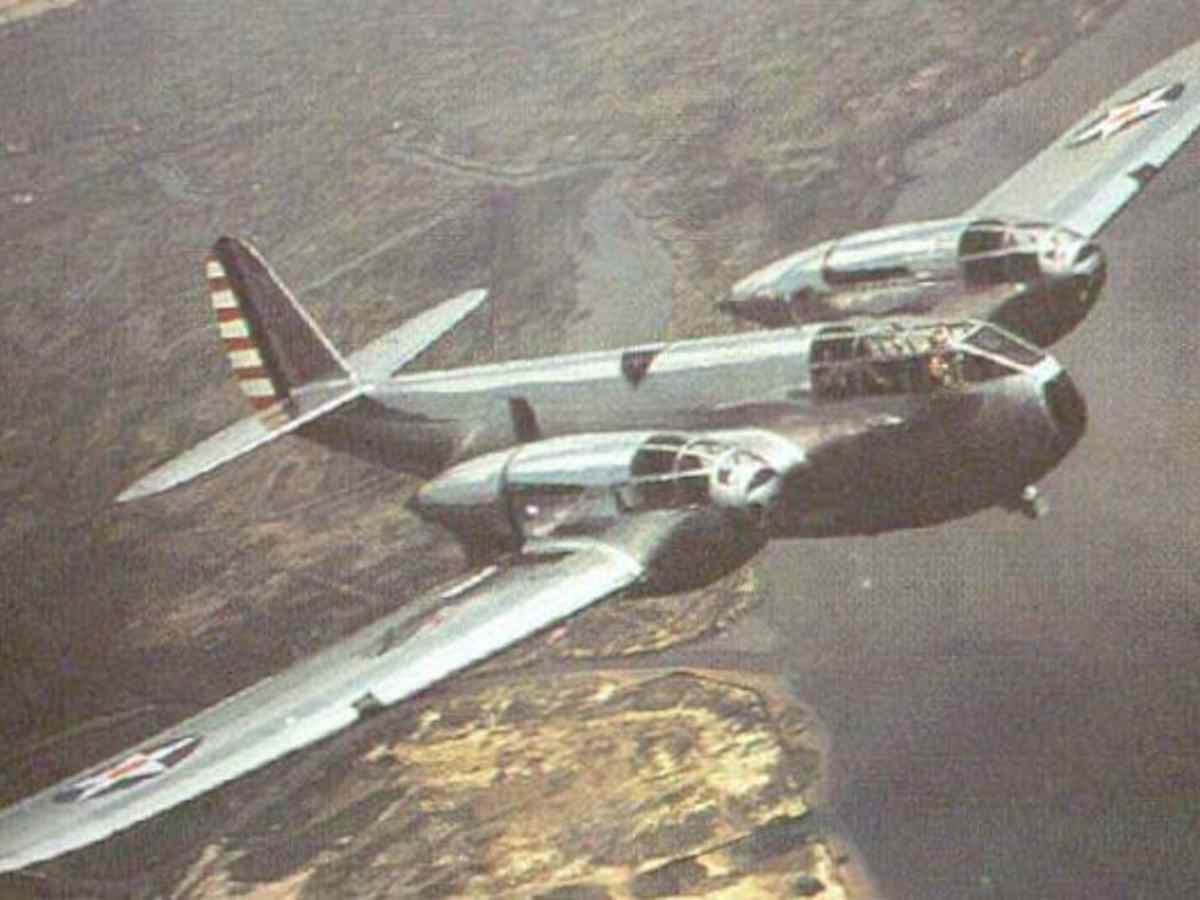
The Bell YFM-1 Airacuda was an experimental heavy fighter aircraft developed in the late 1930s. It was designed as a "bomber destroyer" with a unique configuration featuring forward-firing 37mm cannons in streamlined nacelles on each wing. The Airacuda had a crew of five and was powered by two Allison V-1710 engines.
Despite its innovative design, including a pressurized cabin, the aircraft suffered numerous technical issues. It was underpowered, had poor visibility, and the guns were difficult to aim. Only 13 Airacudas were built, and they never saw combat service. The project was canceled in 1940, but it provided valuable lessons for future aircraft design.
Convair F-102 Delta Dagger
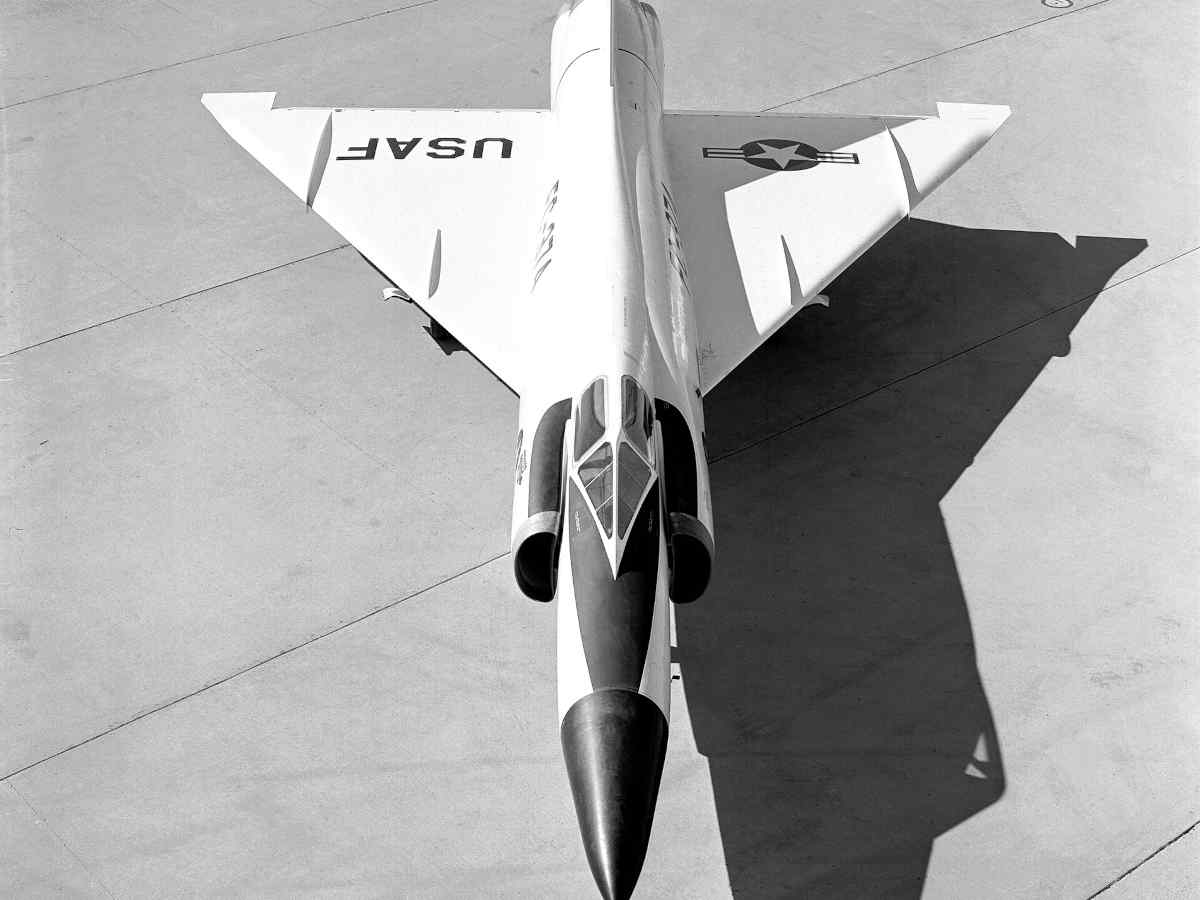
The Convair F-102 Delta Dagger, nicknamed "The Deuce," was America's first supersonic interceptor aircraft. Introduced in 1956, it featured a distinctive delta wing design and was capable of speeds over Mach 1.25. The F-102 was equipped with an advanced fire control system and armed with air-to-air missiles, marking a shift away from gun-armed fighters.
The F-102 played a crucial role in the air defense of North America during the Cold War, ready to intercept potential Soviet bomber incursions. While it saw limited combat use in Vietnam, its primary mission was continental air defense. The F-102 helped pioneer delta wing technology and shaped the development of future interceptor aircraft.
Republic F-105 Thunderchief
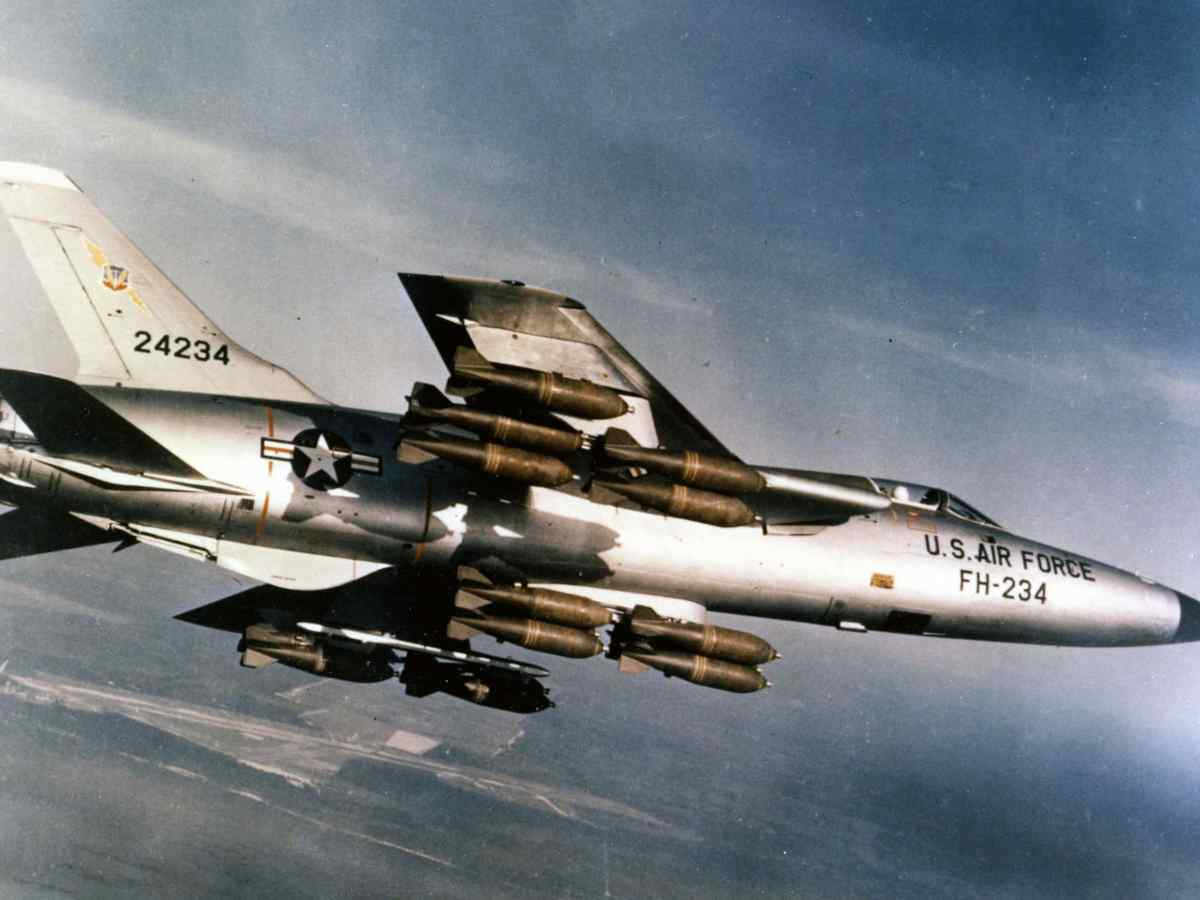
The Republic F-105 Thunderchief, often called the "Thud," was a supersonic fighter-bomber used extensively during Vietnam. Introduced in 1958, it was capable of speeds over Mach 2 and could carry a larger bomb load than a WWII B-17 bomber.
The F-105 was designed for low-altitude, high-speed nuclear strike missions but found its primary use in conventional bombing during Vietnam. It was known for its toughness and ability to absorb battle damage. However, it suffered heavy losses due to its large size and the dangerous missions it flew. Despite this, the Thunderchief was respected for its performance and played a crucial role in the Rolling Thunder bombing campaign.
McDonnell Douglas F-4 Phantom II
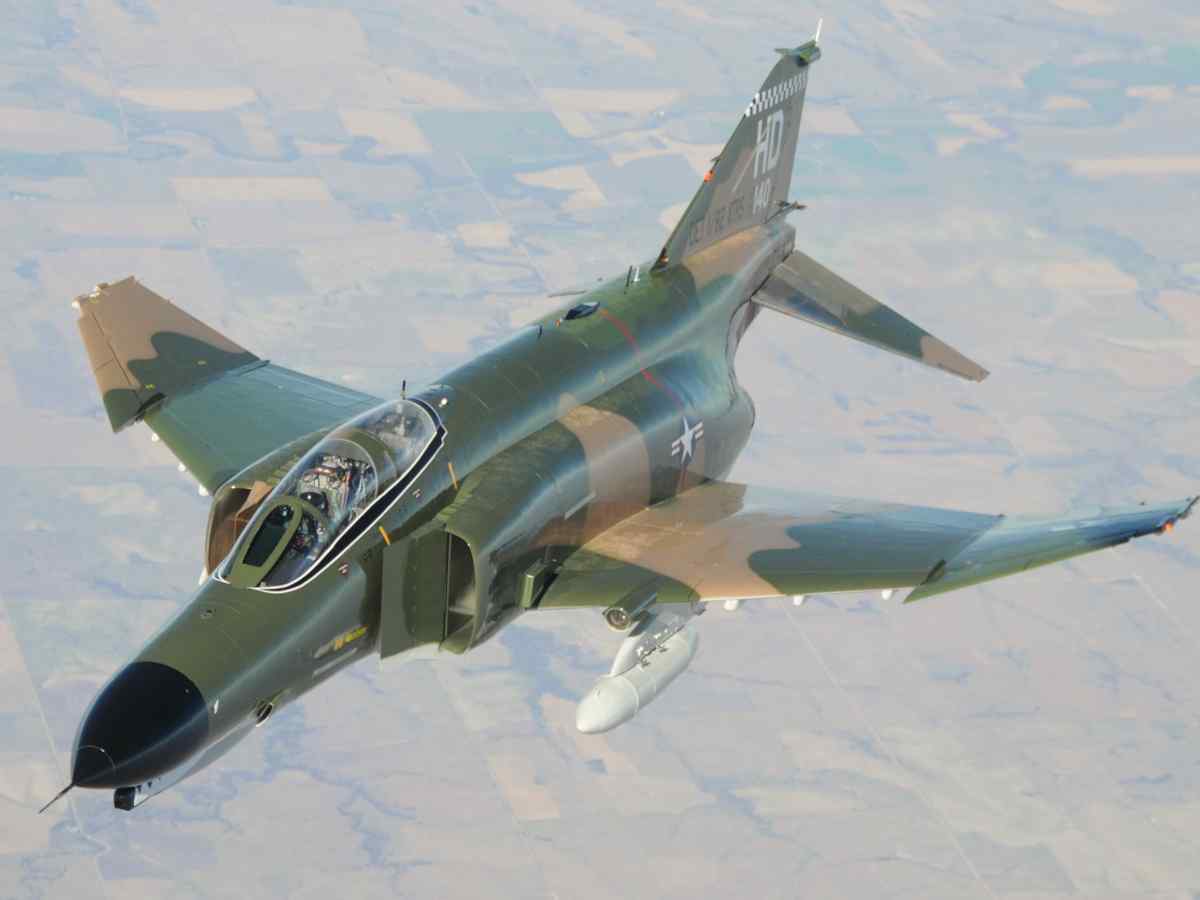
The McDonnell Douglas F-4 Phantom II was a versatile, long-range supersonic fighter-bomber that became one of the most successful and widely used combat aircraft of the Cold War era. Introduced in 1960, it served with the U.S. Navy, Air Force, and Marine Corps, as well as numerous allied nations.
The F-4 was capable of speeds over Mach 2 and could perform multiple roles, including air superiority, close air support, and reconnaissance. It saw extensive combat use in Vietnam and later conflicts. Known for its power and durability, the Phantom II could carry a wide variety of weapons. Despite being designed as a fighter, it gained fame as a bomber and Wild Weasel (anti-SAM) platform. The F-4 remained in service with some air forces into the 21st century.
General Dynamics F-111 Aardvark
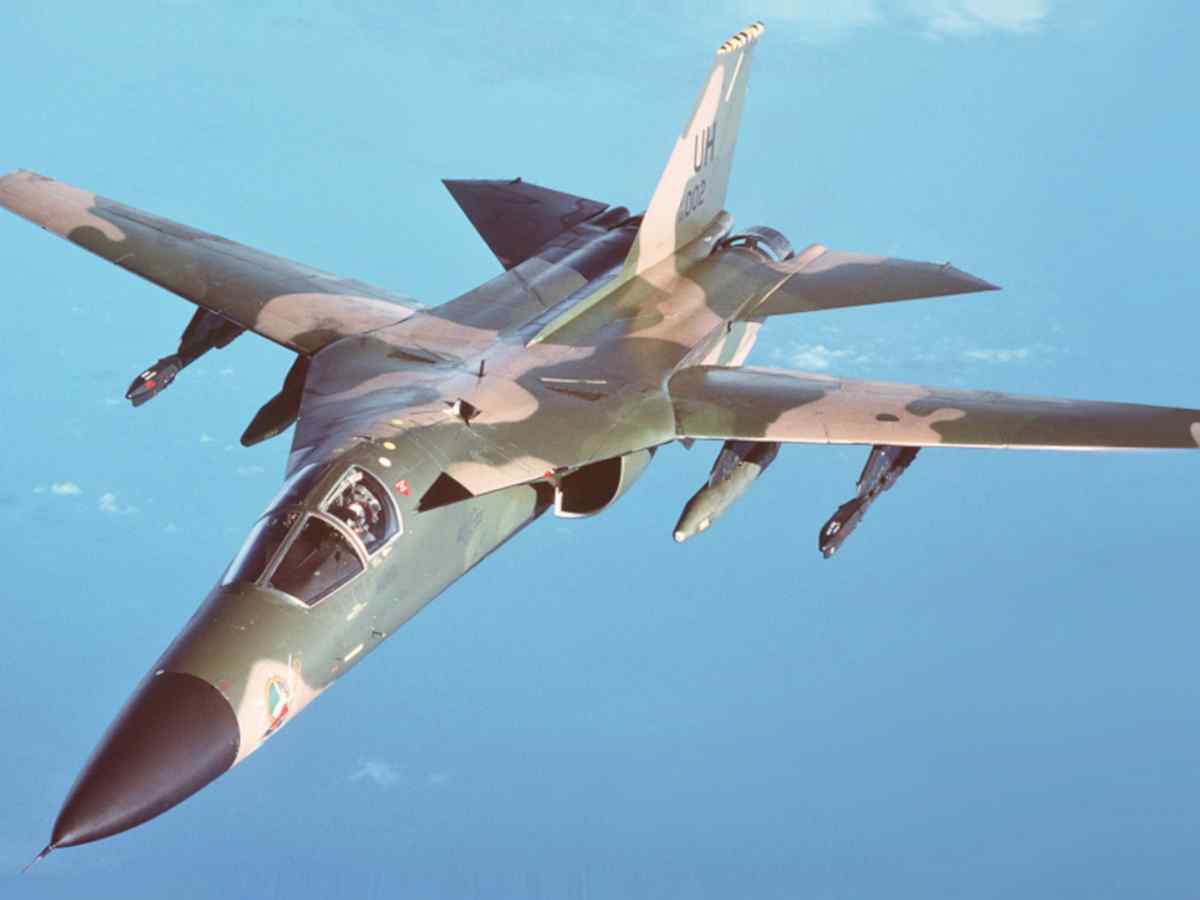
The General Dynamics F-111 Aardvark was a revolutionary supersonic, medium-range interdictor and tactical attack aircraft. Introduced in 1967, it was one of the first production aircraft with variable-sweep wing technology, allowing it to adapt to different flight regimes.
The F-111 could reach speeds of Mach 2.5 and had a combat radius of over 1,300 miles. It was designed for low-altitude penetration and precision strike missions, featuring terrain-following radar for nap-of-the-earth flight. The Aardvark served prominently in the Vietnam War, Operation El Dorado Canyon against Libya, and the Gulf War. Its long range, high speed, and large payload capacity made it a formidable deep-strike platform until its retirement in 1998.
Northrop YF-23

The Northrop YF-23 was an advanced tactical fighter prototype developed in the late 1980s as part of the U.S. Air Force's Advanced Tactical Fighter program. It competed against the Lockheed YF-22 (which became the F-22 Raptor) but was not selected for production. The YF-23 featured a unique diamond-shaped wing and all-moving V-tail. It was designed for stealth, supercruise (supersonic flight without afterburners), and high maneuverability.
The aircraft could reach speeds of Mach 2.2 and had superior stealth characteristics in some aspects compared to the YF-22. Only two prototypes were built, which now reside in museums. Despite its cancellation, the YF-23 represented significant advancements in fighter technology and design.
Lockheed Martin F-35 Lightning II

The Lockheed Martin F-35 Lightning II is a family of fifth-generation, single-seat, single-engine, all-weather stealth multirole combat aircraft. Developed to perform ground attack, aerial reconnaissance, and air defense missions, the F-35 comes in three main variants: conventional takeoff and landing (F-35A), short takeoff and vertical landing (F-35B), and carrier-based (F-35C).
Introduced in 2015, the F-35 features advanced stealth technology, integrated avionics, and a powerful sensor suite. The F-35 can reach speeds of Mach 1.6+ at high altitude and has a combat radius of up to 670 nautical miles. Despite facing development challenges and criticisms over its cost, the F-35 program aims to provide a common platform for multiple services and allied nations, enhancing interoperability and reducing long-term costs.
Grumman F-14 Tomcat
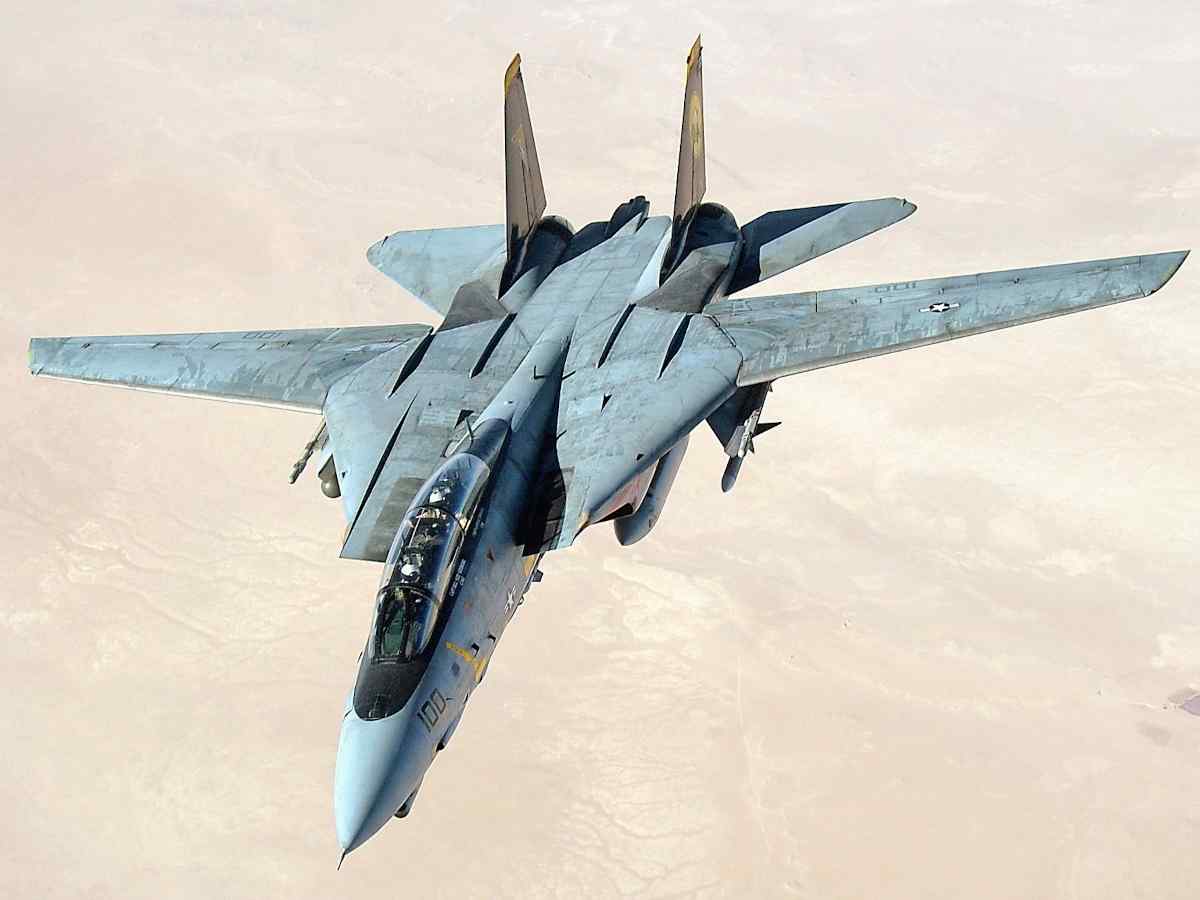
The Grumman F-14 Tomcat was a supersonic, twin-engine, two-seat fighter aircraft operated by the U.S. Navy from 1974 to 2006. Known for its variable-sweep wing design, the F-14 could adapt its wing configuration for optimal performance at various speeds. It was capable of speeds over Mach 2.3 and carried the powerful AWG-9 radar system, allowing it to track multiple targets at long range.
The Tomcat's primary armament was the AIM-54 Phoenix missile, capable of engaging targets over 100 miles away. Famous for its role in the 1986 Libya bombing and the film "Top Gun," the F-14 was a formidable air superiority fighter and fleet defender throughout its service life.
McDonnell Douglas F-15 Eagle

The McDonnell Douglas (now Boeing) F-15 Eagle is a twin-engine, all-weather tactical fighter designed for air superiority. Introduced in 1976, it has been one of the most successful modern fighters, with over 100 aerial combat victories and no losses in dogfights. The F-15 can reach speeds of Mach 2.5 and has an impressive thrust-to-weight ratio, allowing for excellent acceleration and maneuverability.
The F-15 features advanced avionics and a powerful radar system. The Eagle has served in numerous conflicts, from the Gulf War to recent operations in the Middle East. Various models have been developed, including the F-15E Strike Eagle, a two-seat variant optimized for ground attack. The F-15's design has influenced fighter development worldwide.
F-16 Fighting Falcon
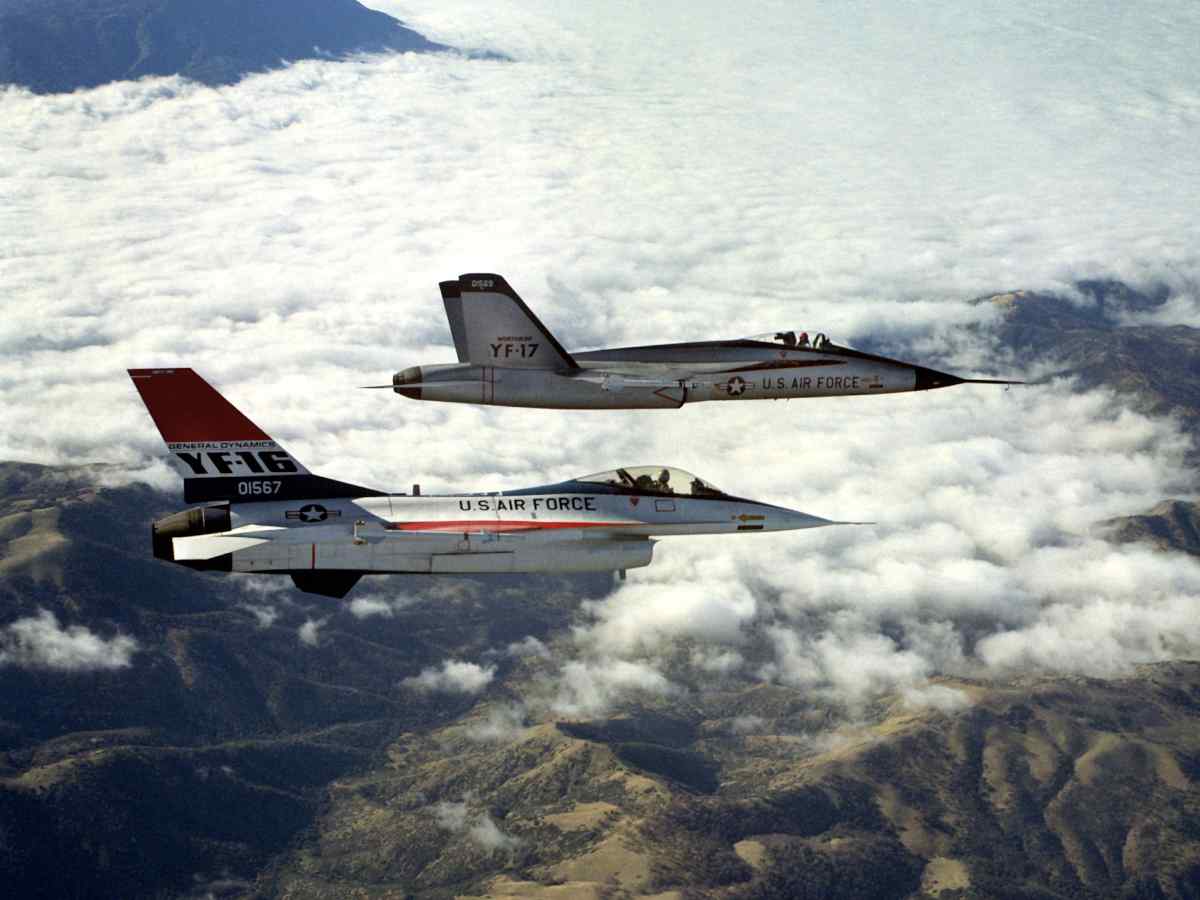
The General Dynamics (now Lockheed Martin) F-16 Fighting Falcon, often called the "Viper" by pilots, is a highly successful multirole fighter aircraft. Introduced in 1978, it has been continuously improved and remains in production. The F-16 is known for its agility, featuring a fly-by-wire control system and a unique side-mounted control stick. It can reach Mach 2 and pull 9G maneuvers.
Versatile and cost-effective, the F-16 has been widely exported and serves numerous air forces worldwide. It has seen extensive combat use in various conflicts, excelling in both air-to-air and air-to-ground roles. The F-16's success has made it one of the most numerous fighter aircraft in service globally.
F-117 Nighthawk
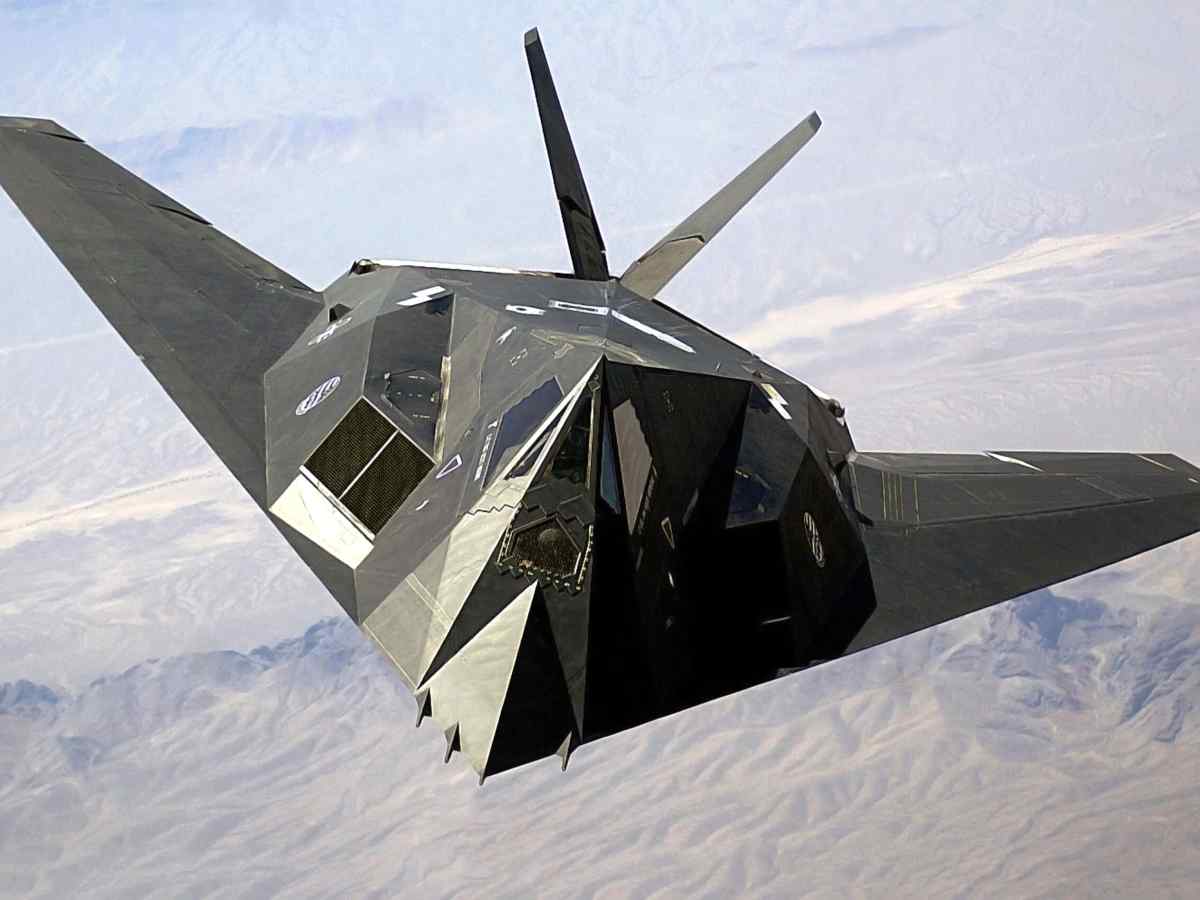
The Lockheed F-117 Nighthawk was the world's first operational stealth aircraft. Introduced in 1983 but kept secret until 1988, it revolutionized aerial warfare. The F-117's unique faceted design and radar-absorbing materials made it nearly invisible to enemy radar. Despite its "F" designation, it was primarily a precision ground-attack aircraft.
The Nighthawk could fly at subsonic speeds and carry up to 5,000 pounds of smart bombs. It played a crucial role in the Gulf War, striking high-value targets with unprecedented accuracy. The F-117 continued to serve in various conflicts until its retirement in 2008, though some units were kept operational for years after. Its development paved the way for future stealth aircraft.
F-22 Raptor
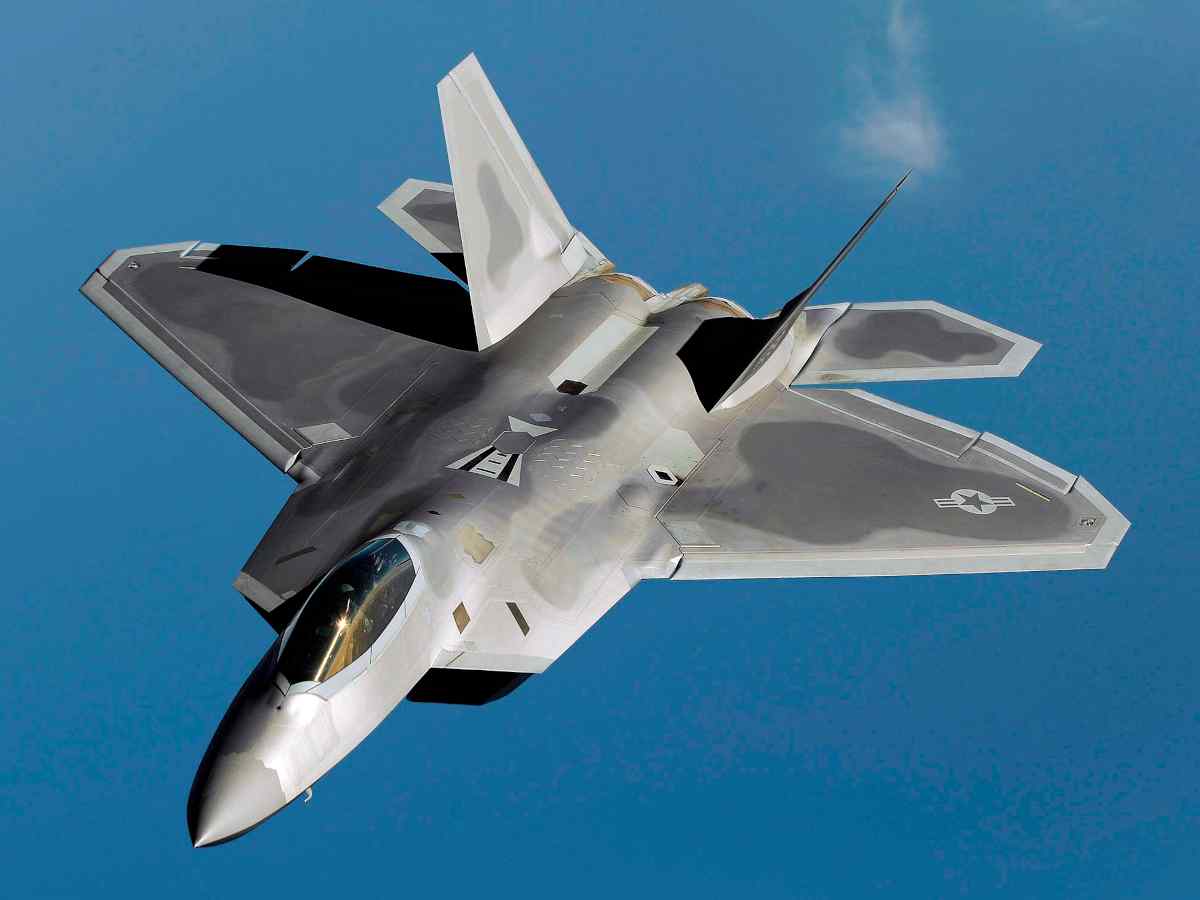
The Lockheed Martin F-22 Raptor is a fifth-generation, twin-engine stealth tactical fighter aircraft. Introduced in 2005, it was designed primarily as an air superiority fighter but also has ground attack, electronic warfare, and signals intelligence capabilities. The F-22 features advanced stealth technology, supercruise ability, thrust-vectoring for high maneuverability, and integrated avionics. It can reach speeds of Mach 2.25 and supercruise at Mach 1.82.
The Raptor's combination of stealth, speed, and advanced sensors gives it unparalleled air combat capabilities. However, its high cost led to a limited production run, with only 187 operational aircraft built. The F-22 represents the pinnacle of air superiority fighter design and has set new standards for combat aircraft performance.
 Author
James Stephens
Last Updated: November 27, 2025
Author
James Stephens
Last Updated: November 27, 2025